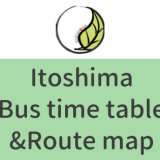Hello!
We are Kana & Nogi: the owners of the Guesthouse Kotonoha in ITOSHIMA, Fukuoka, Japan. Thank you for your visiting our site.
Itoshima is waiting for you with delicious gastronomy & beautiful nature.
Speaking of Fukuoka, one of famous things is “Hakataori(=silk fabric made in Fukuoka)”.
The unique Hakata textiles that were born during the Kamakura period were adopted as “tribute” to the shogunate in the Edo period, and became one of the country-representative products.
Now it becomes a traditional craft for other countries.
There is a factory and a gallery of “Sanui Textile” in Nishi word of Fukuoka city.
It is very close to Itoshima city.
The factory tour is FREE!
“Factory Tour” is popular for overseas people!
Gallery “Hakataori Craft Museum”
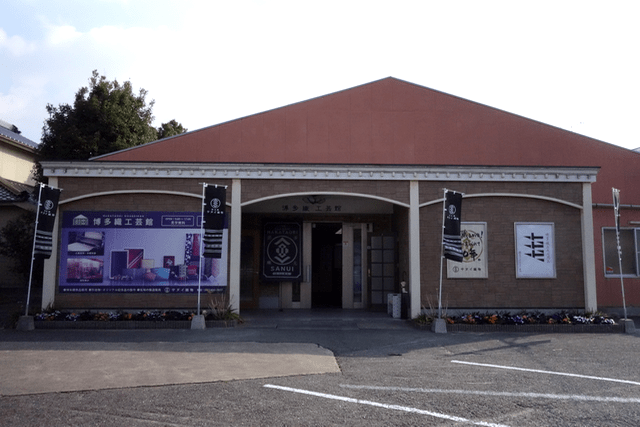
Let’s go to the gallery first!

You can visit the gallery for free.
There are a variety of historical exhibits when you go inside.

Hakataori used in a variety of situations
It is not the case that textiles are used only for kimonos.
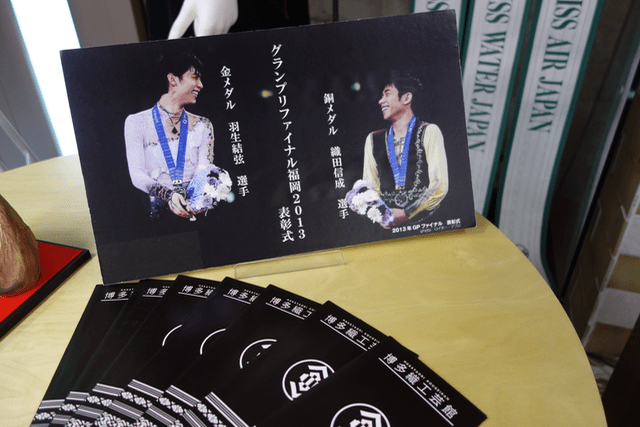
It is said that Hakataori was used for the string part of the medal in the Grand Prix Final in 2013 of figure skating.
It is fashionable.
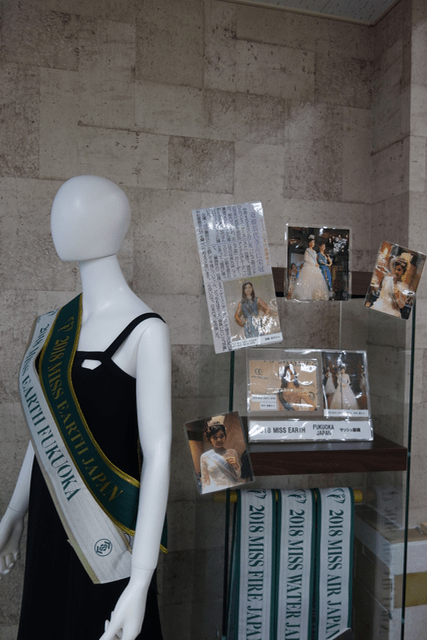
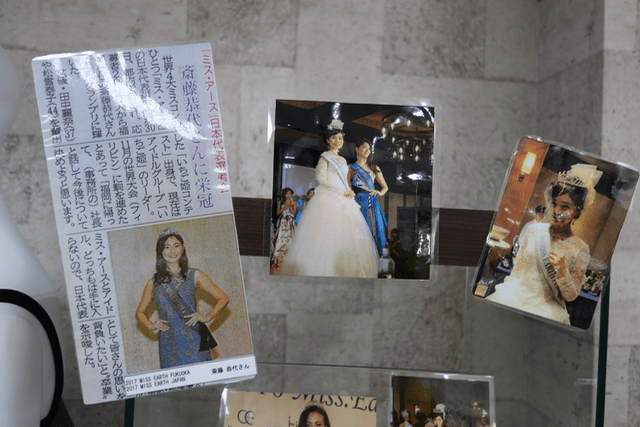
In 2018, Hakataori was used in a sash of “Miss Earth Japan” .
There is a dignity in a very modern pattern.
Although it is a traditional craft, it is developed more and more in conformity with the times.
Here is famous for foreign people.
Let’s go to the Factory Tour!
Large weaving
After a while, the staff spoke to us and took us to the neighboring factory for a tour.
Please make a reservation in advance when you need English guidance.
If you want to see with a large number of people, reservations are also required.
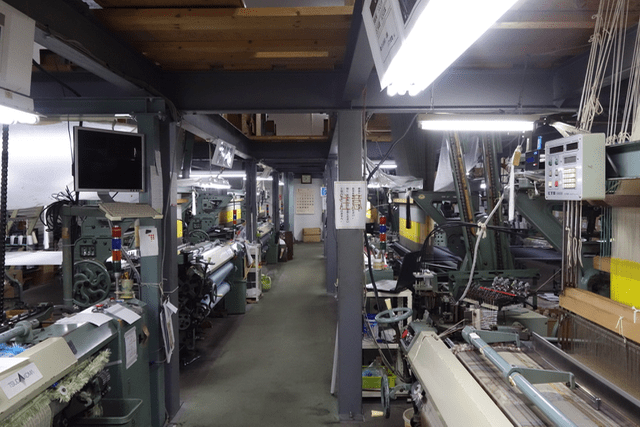
The factory tour is exciting after all.
Because the warp and the weft are combined at high speed, the sound which makes the textile is echoes as the machine turns in a comfortable rhythm.

The weaving machine is bigger than I thought, and a large machine is installed on the second floor to handle the warp thread.
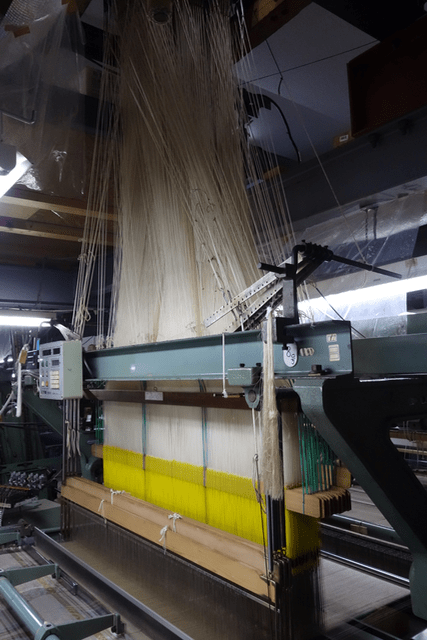
It’s a huge amount of warp.
This is a feature of the Hakataori.
It makes the pattern with a large amount of thin warp thread.
There is thickness in the fabric, and it is also a feature that it does not loosen when tightened.

Because the woof is tailored to a thick thread by putting together a thin thread in a bundle, it is “supple and strong”.
Therefore, when you put the Hakataori tightened, the sound of the silk rubbing called “Kinunari(=silk ring)” is made!
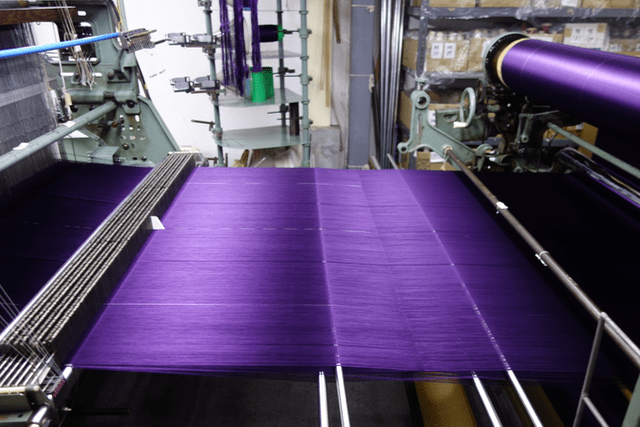
The dense Hakataori has a beautiful shine.
Noble and wonderful hue.
Hakataori pattern
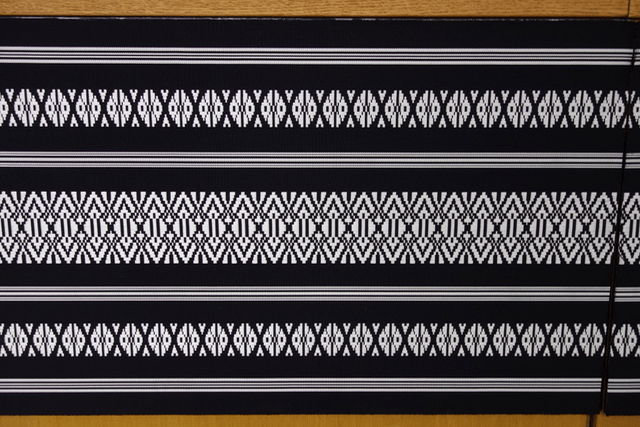
It is called “Kenjo-gara(=tribute pattern for shogunate)” that is famous as a pattern of the Hakataori.
A pattern that mimics the “Tokko” and “Hanazara” of Buddhist fittings, and the “peculiar stripes” were arranged between them.
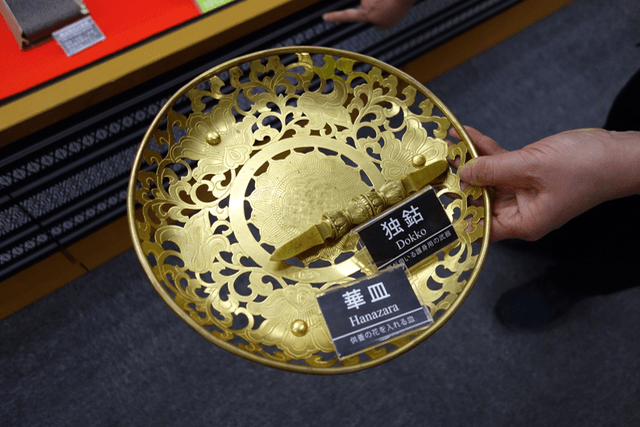
“Tokko” is a Buddhist tool which is thought to destroy the disturbing desires, and “Hanazara” is a dish to put the flower for the Buddha’s memorial.
Hakataori is also characteristic of relation to the Buddhism.
The pattern was named as a tribute to the shogunate during the Edo period.
I was very happy that the staff explained carefully.
It is very precious because there are few places where you can visit the factory of traditional crafts.
Hakataori process
I introduce the process of Hakataori easily.
The process is more finely divided.
Timeline [TL label = ‘ STEP.1 ‘ title = ‘ Design ‘] based on the drawing, it is painted at the graph paper. [/l] [TL label = ‘ STEP.2 ‘ title = ‘ Dyeing ‘] To dye the yarn according to the color swatch.Because it becomes completely different image by the difference of a slight color, it is work demanded perfect. [/l] [TL label = ‘ STEP.3 ‘ title = ‘ Preparing warp ‘] To prepare warps of the required length and number. Depending on the work, it is a hard work to require more than 5000 to 8000 pieces. [/l] [TL label = ‘ STEP.4 ‘ title = ‘ Weaving ‘]To weave by machine. [/l] [/testeline]
Shopping at the shop in the gallery!
There is also a shop in the gallery, so let’s stop by at the end!

A variety of products are lined up in the shop.
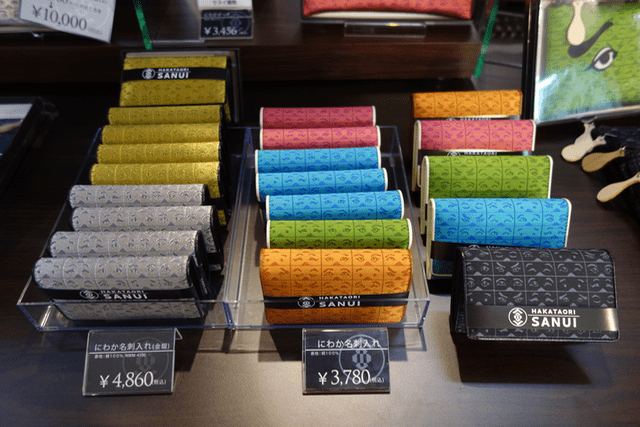
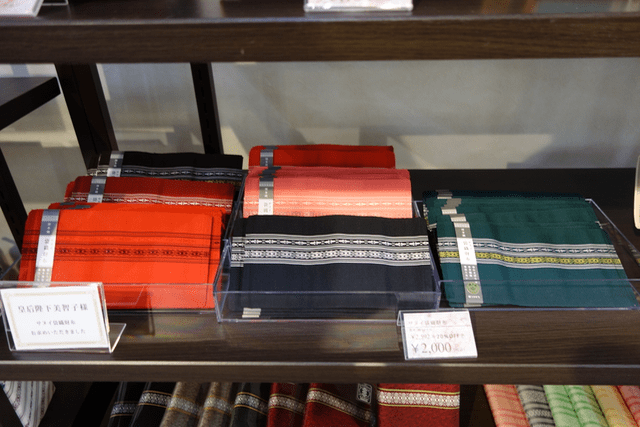
This is a purse in a kimono belt.
The pattern is wonderful, and it is convenient.

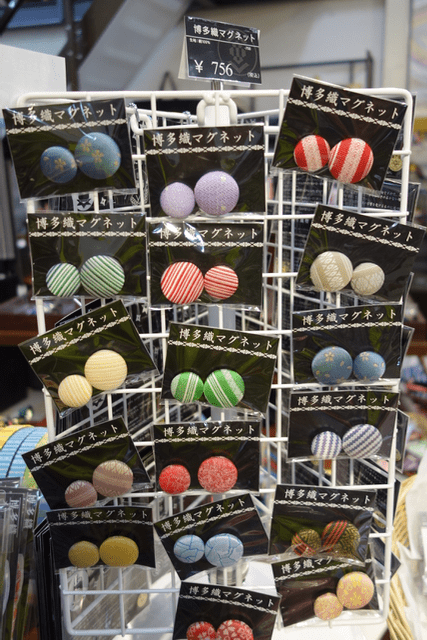
It is just a pattern that seems to fit well in modern life.
In the Factory shop, it is also a benefit that you can buy more reasonable than buying elsewhere.
Hand-woven experience!
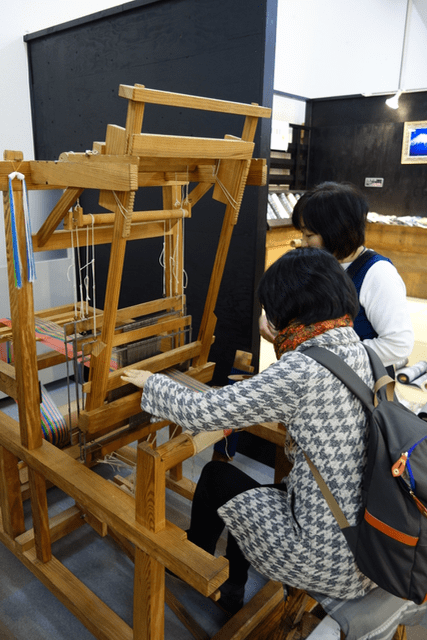
There is an old weaving in the shop, and the hand-woven experience can be done under the guidance of the staff.
People in the past were doing things like this carefully.
It was valuable experience.Thank you very much!
Sanui Textile is the place I want to recommend for tourists from overseas, especially.
Shop information
| (*Information as of February 2019) | |
| Name | Hakataori Sanui (Hakataori Craft Museum) |
| Opening Hours: | 10:00-17:00 |
| Closed: | New Year days, Bon Festival |
| Tour fee | Free |
| Parking: | Prepared |
| Hp: | http://sanui-orimono.co.jp/ |
| Address: | 3-51-22 Odo, Nishi-ku, Fukuoka |
| Map: |
We want to share ITOSHIMA with you!!
— The guesthouse to connect you and Japan —
Itoshima Guest house Kotonoha
(糸島ゲストハウス 前原宿ことのは)
We welcome your reservation to stay.
Thanks!


